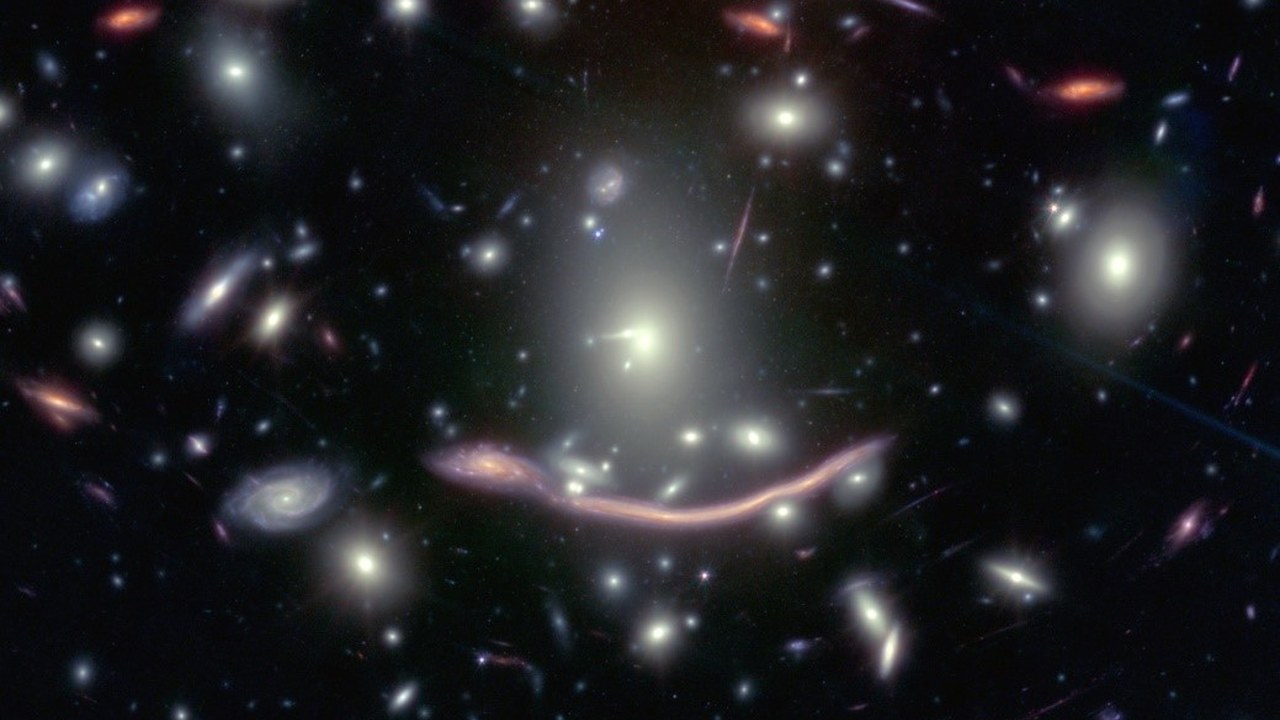A treasure trove of unseen stars seen beyond the Dragon Arc
The discovery, in which Tom Broadhurst, Ikerbasque researcher at the UPV/EHU and associate of DIPC, has participated, has made it possible to detect individual stars in the distant universe. A discovery that sheds light on the elusive nature of dark matter. The results of the research have been published in the prestigious journal Nature Astronomy.

An international team of astronomers, including Ikerbasque researcher Tom Broadhurst, who works at the UPV/EHU and Donostia International Physics Center (DIPC), took pictures of more than 40 individual stars in a galaxy so far away its light dates back to when the universe was only half its present age.
Using NASA's James Webb Space Telescope (JWST), the team observed a galaxy nearly 6.5 billion light-years from Earth, at a time when the universe was half its current age. In this distant galaxy, the team identified 44 individual stars, made visible thanks to an effect known as gravitational lensing and JWST's high light collecting sensitivity.
Published in the journal Nature Astronomy, this discovery marks an unprecedented achievement: the largest number of individual stars detected in the distant universe. It also opens a way to investigate one of the greatest mysteries of the universe: dark matter.
The team of astrophysicists located these stars while inspecting JWST images of a galaxy known as the Dragon Arc, located along the line of sight from Earth behind a massive cluster of galaxies called Abell 370. Due to its gravitational lensing effect, Abell 370 stretches the Dragon Arc's signature spiral into an elongated shape – like a hall of mirrors of cosmic proportions”.
The reserach team analyzed the colors of each of the stars inside Dragon Arc and found that many are red supergiants, similar to Betelgeuse in the constellation Orion, which is in the final stages of its life. This contrasts with previous discoveries, which identified predominantly blue supergiants similar to Rigel and Deneb, which are among the brightest stars in the night sky. According to the researchers, this difference in stellar types also highlights the unique power of JWST observations at infrared wavelengths.
Most galaxies, including the Milky Way, contain tens of billions of stars. In nearby galaxies such as the Andromeda galaxy, scientists can observe stars one by one. However, in galaxies billions of light-years away, stars appear blended together as their light needs to travel for billions of light-years before reaching us, presenting a constant challenge to scientists studying how galaxies form and evolve. Galaxies that are far away often appear as a diffuse, fuzzy blob, and even if they were made up of many, many individual stars, it has not been possible to resolve them to date because of the limitations of telescopes.
Future observations with JWST are expected to capture more magnified stars in the Dragon Arc galaxy. These efforts could lead to detailed studies of hundreds of stars in distant galaxies. In addition, observations of individual stars could provide insight into the structure of gravitational lenses and even shed light on the elusive nature of dark matter, since as concluded in a recent paper by the UPV/EHU-DIPC team, formed by Ikerbasque researcher Tom Broadhurst himself, together with George Smoot, Nobel Laureate in Physics, and PhD student Paloma Morillo, the positions of the stars in the Dragon Arc imply that dark matter is wave-like rather than heavy particles.
Bibliographical reference:
